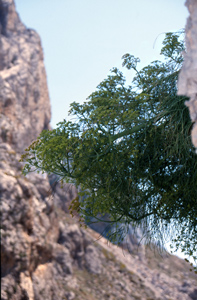Project activities

The project started in October 2011 and the first phase has run for three years, finishing in September 2014, with the participation of seven conservation organisations, six of them based on the main Mediterranean islands (Sicily, Sardinia, Cyprus, Corsica, Crete and Mallorca). They have worked together to achieve ex situ conservation of over 900 plant taxa through seed conservation. Seeds have been collected from the priority plant taxa on each of the islands represented, following internationally accepted collecting standards. Research has been carried out on these priority species and data disseminated to aid conservation and restoration activities. Alongside collecting, a Mediterranean Basin Island seed conservation network has been established, fostering cooperation, collaboration and promoting the exchange of experience and ideas.
Development of a Mediterranean Basin collecting plan
The collection planning follows the model developed by the European Native Seed Conservation Network (ENSCONET) modified for the Mediterranean Basin islands. In a multi-step process, the partners closely cooperated to first prioritise species by ranking on the basis of, for example, endemicity and threat level, then identify and select populations for collection. Each partner weighted the criteria according to their specific needs. This can include disjunct populations of the same species on different islands. This planning identified data deficient species and the network drafted a scientific plan for discovering and monitoring populations of these species.
Implementation of the collecting plan
Collection of high quality seed material and associated data from 900 plant taxa was carried out over three collecting seasons. Seed collection adhered to national and international regulations and standards. There were also several joint field trips within the network.
Seed curation and storage
Seed collections are stored in local seed bank facilities on the six islands and backed up at the Millennium Seed Bank (UK). Germination tests continue to be carried out to assess the viability of the material and to ensure regeneration is possible. Data from the research, including germination protocols, where national and international law permits, are publically available online in the European Native Seed Conservation Database (http://enscobase.maich.gr/) which hosts currently 9,294 species entries.
Networking
A network of seed conservationists in the Mediterranean Basin has been developed to improve local conservation initiatives and build relationships between institutes and staff working in seed conservation across the Mediterranean, linking for example seed banks with universities and other research facilities. The network has facilitated collaboration and resource sharing. A programme of joint seed collecting trips has forged relationships as well as improved local knowledge about the ecology and taxonomy of the flora of all six Mediterranean islands. This network has also linked to other stakeholders for biodiversity and conservation in the Mediterranean Basin. It also endeavours to make and strengthen links with potential seed users (for example, regional administration and national park authorities).
Training
Training has been provided through fieldwork to staff and students. The project has also included higher-level training (which includes MSc and PhD support). Research projects include elements of research into reproductive biology, germination, and or conservation monitoring and management of Mediterranean threatened plant species.

